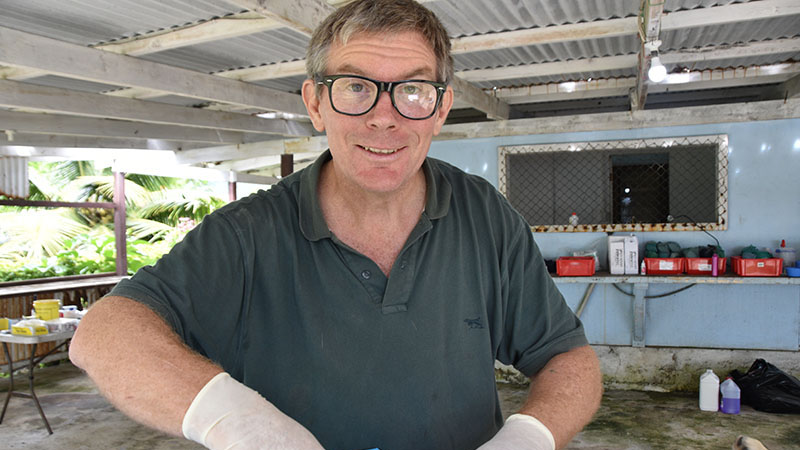Pet Talk: Tethering, tying or torturing?
Wednesday 5 July 2023 | Written by Supplied | Published in Opinion, Pet Talk

Te Are Manu Veterinary Clinic services vet Dr Michael Baer. PHOTO: AL WILLIAMS 21092206
There were several complaints. People were very distressed to see the degree of damage. And she couldn’t walk writes Dr Michael Baer.
The poor nanny goat dragged herself on her front legs. No surprise, since both of her back feet were essentially stumps. No one knew who to contact, so they called us. And she was treated. But her legs were horrendous.
And why? Because she had been tethered, tied to a stake with a rope. The rope was too tight. It had cut in and destroyed the skin, tendons, nerves and blood vessels. The damage had caused her hooves to fall off, leaving deformed stumps.
The pig was not much better. But at least it was only one foot that was falling off. Another goat had a foot that was passed that point, it had fallen off. So, he must be ok now? Well maybe not. He got around on a stump of bleeding bone, which tried, unsuccessfully, to form a callus. Each step caused agony.
Unfortunately, these three animals are not the only cases, and they represent their fellow sufferers fairly. They are not extremes. They are common-ish examples of the damage a rope tether can do if it is too tight, or not changed often enough.
Containing animals is the first requirement of farming. It means the animal becomes the property of the farmer, and therefore normal property rights prevail. It is my goat; you can’t take it because that is theft. However, ownership comes with obligations. Farmers must take responsibility for their animals, for feeding, for health, for water, for shelter, and for safe confinement. Confinement protects the animal, it also protects neighbours and the environment.
Containing animals can be done in lots of ways. Shepherds travel with flocks and herds, containing animals within their groups. Limited water sources stop animals straying. Fences provide boundaries for where animals can go. And rope tied around a foot or a neck limits animals to a circle around the central area.
And all of these methods have their own problems. But ropes can be so cruel. Food can be just out of reach; water can be missing. And the rope can be abrasive and chafe. Or be too tight and strangle.
Ropes can be good too. If the rope is soft, loose enough to allow movement and the underlying skin is protected. Correct knots help greatly. Constant vigilance to recognise when a problem starts. And the will and ability to fix the problem.
Please don’t let these cases continue to be common. Watch your animals and act when the tether is not doing the job. And don’t wait to ask for help.














































